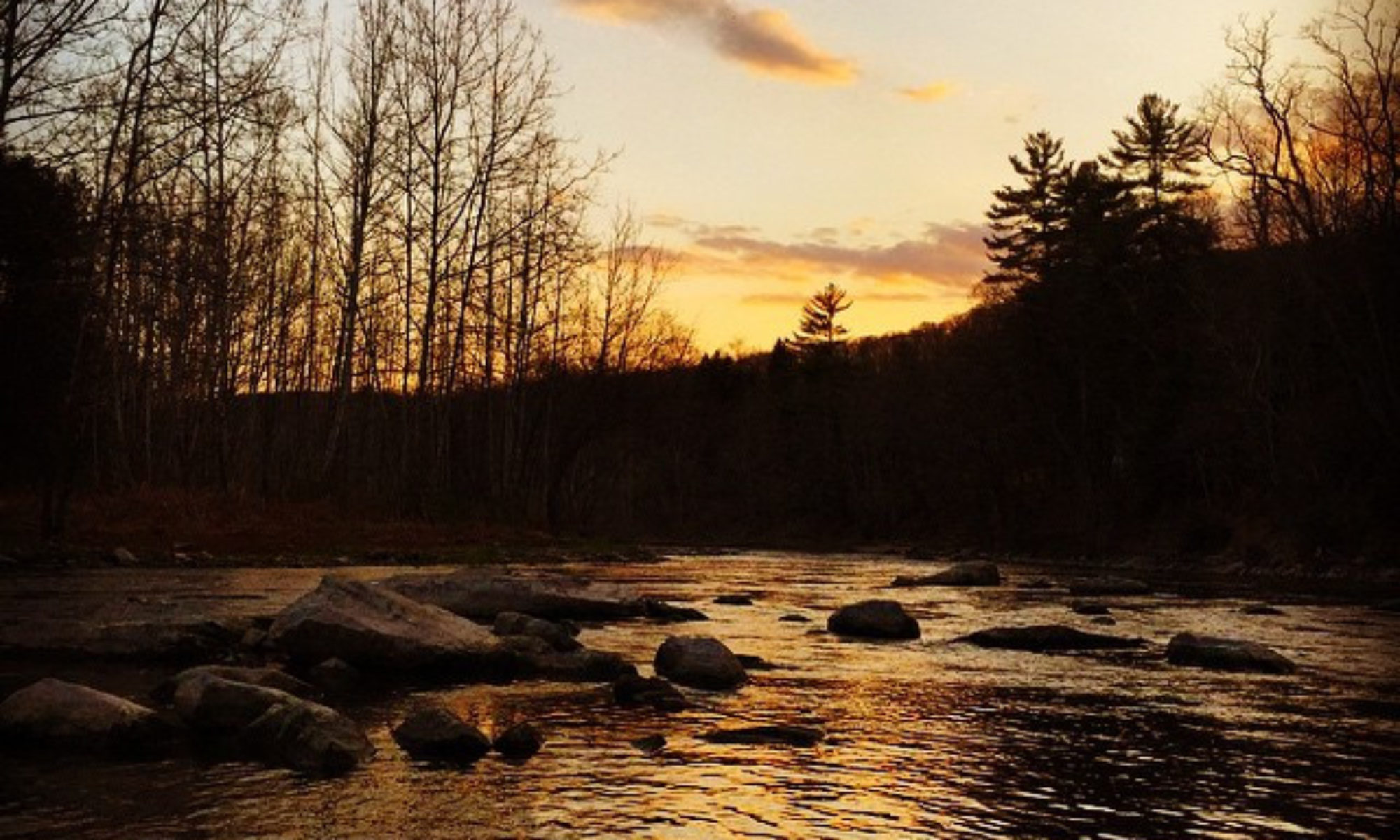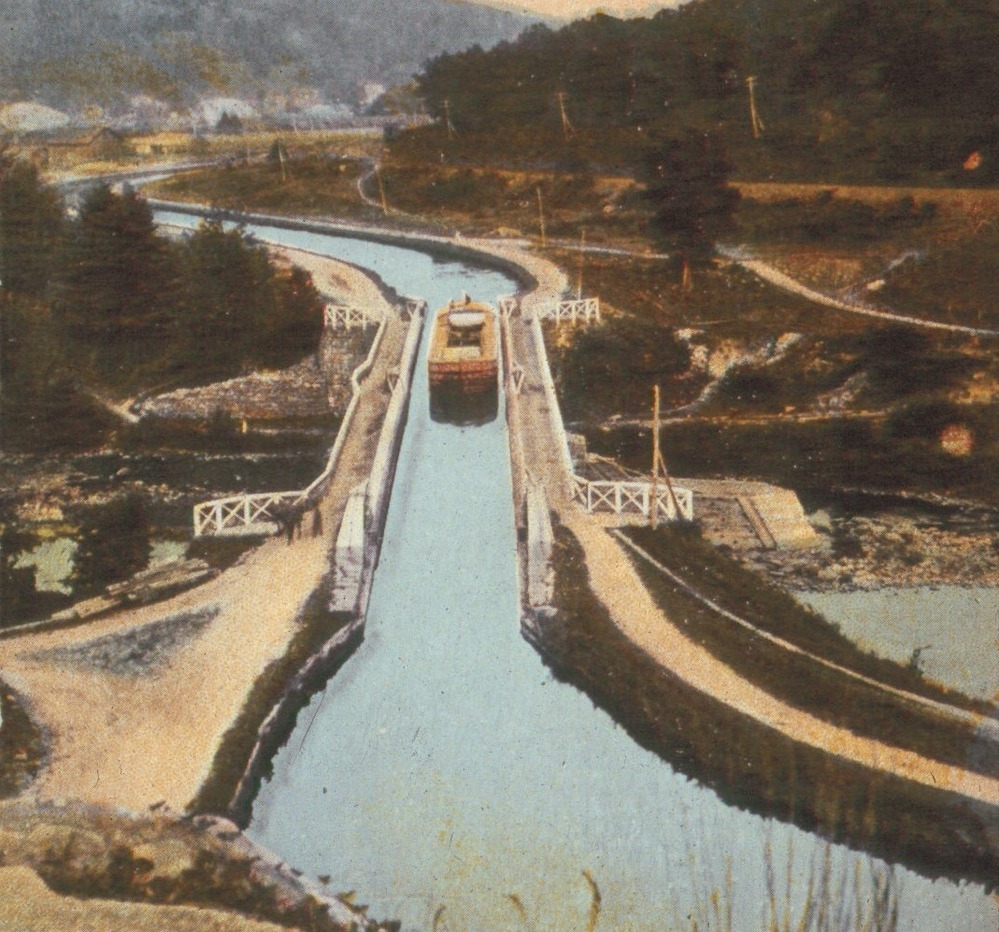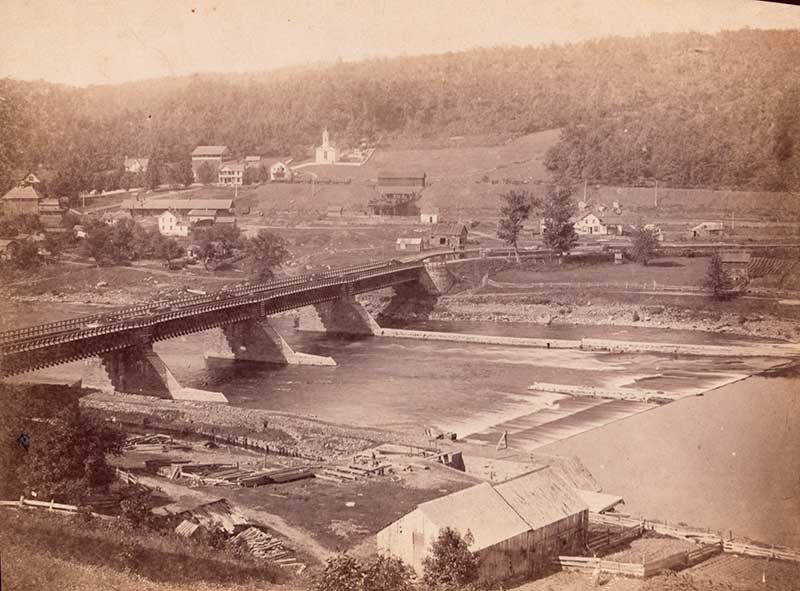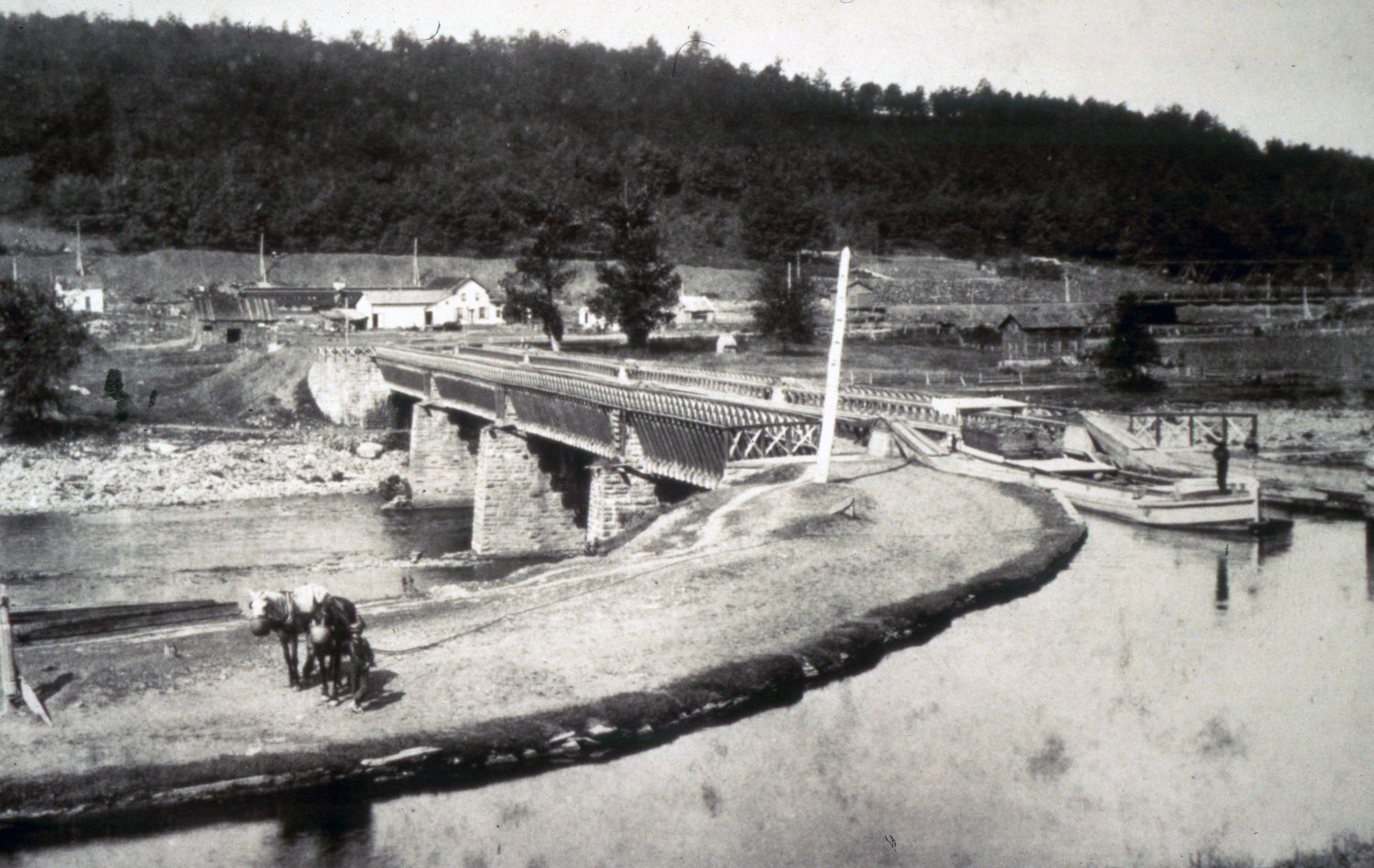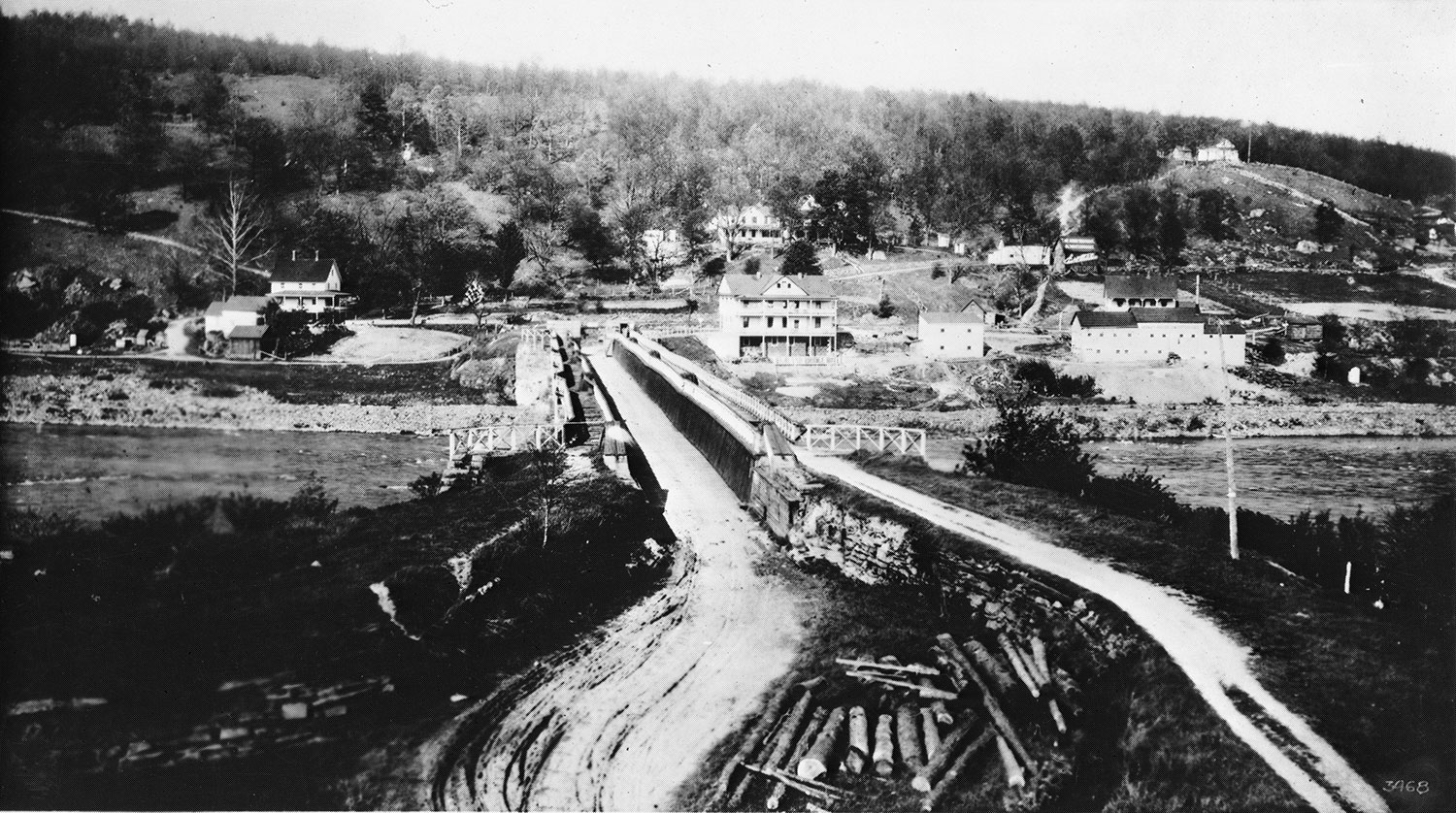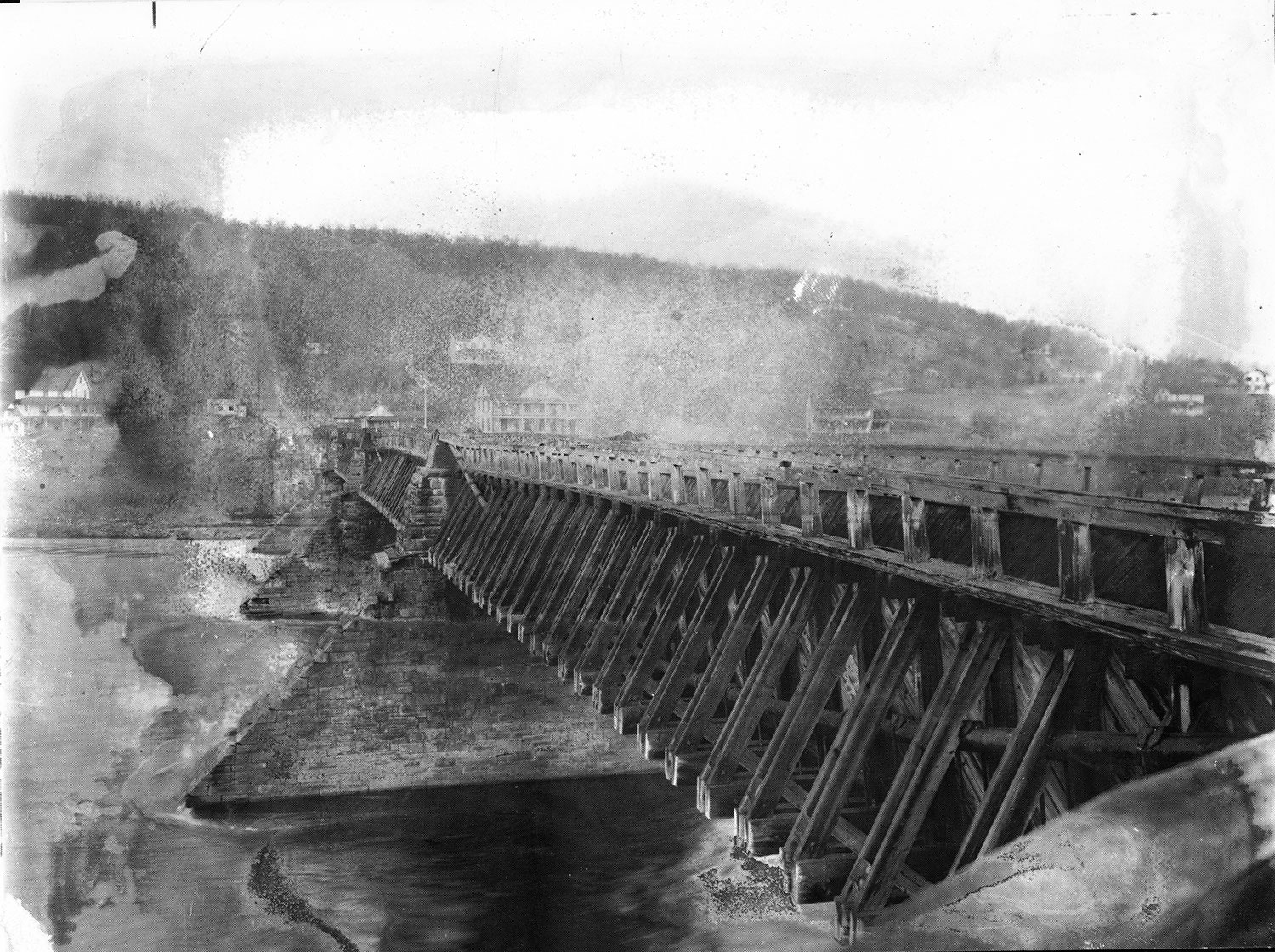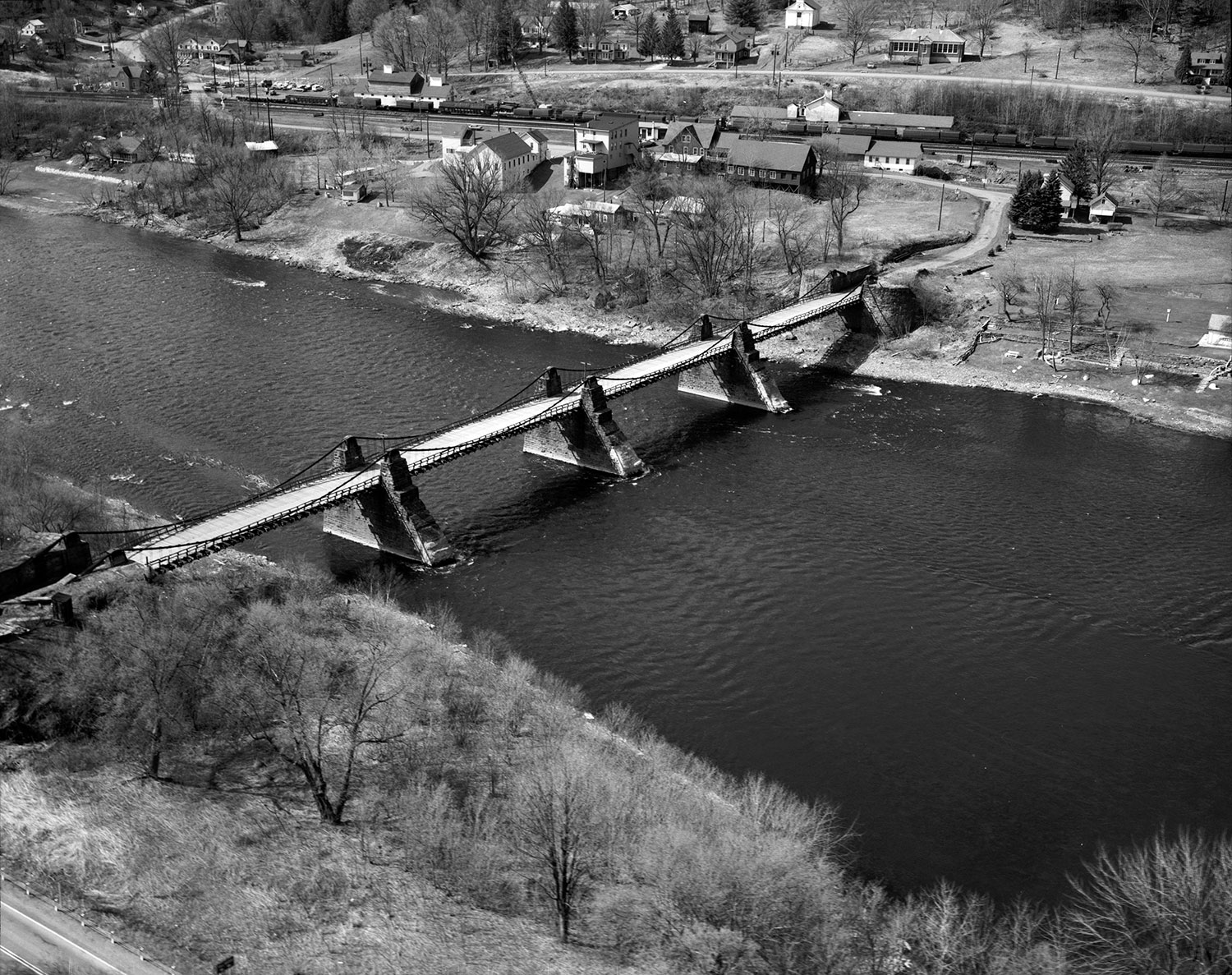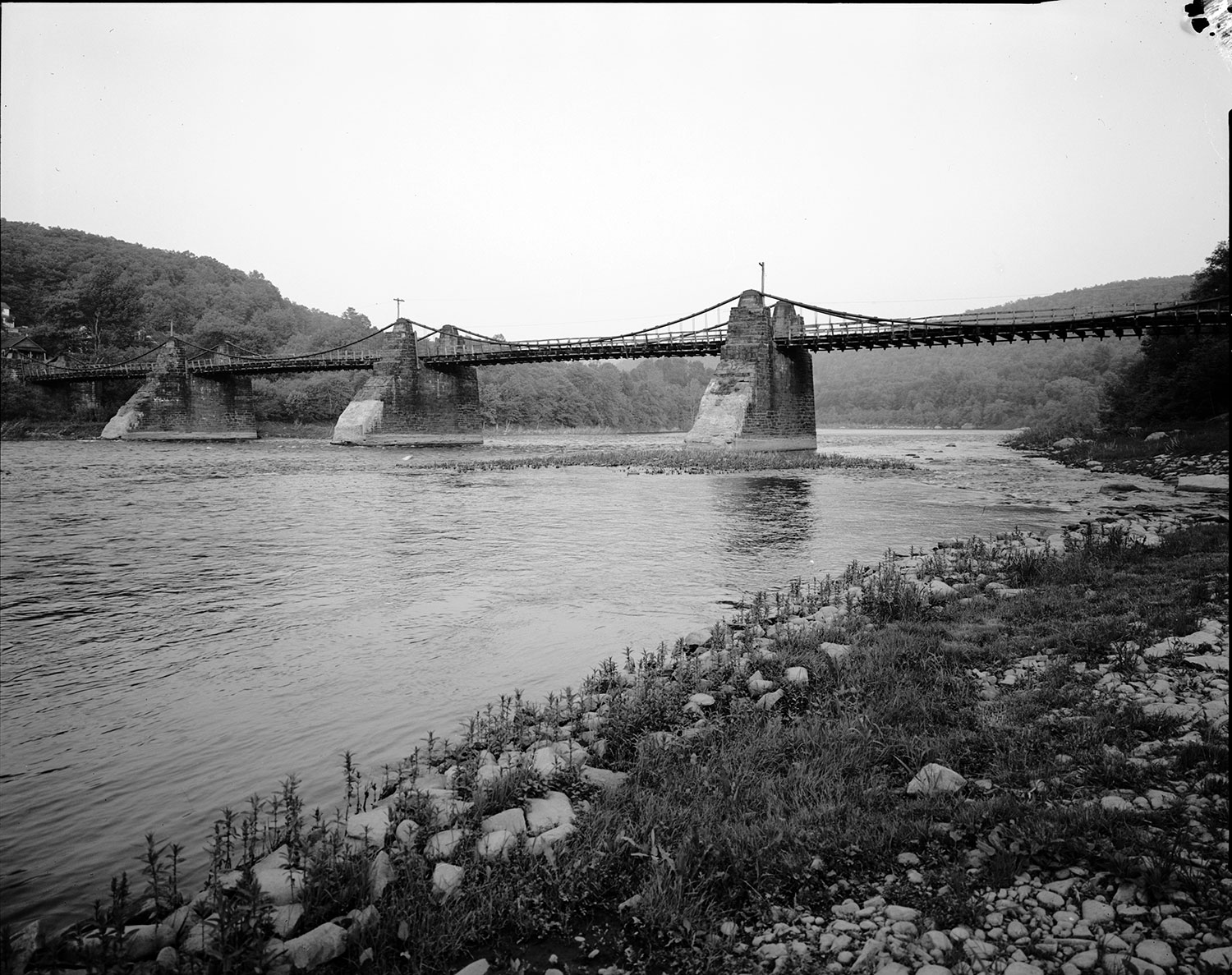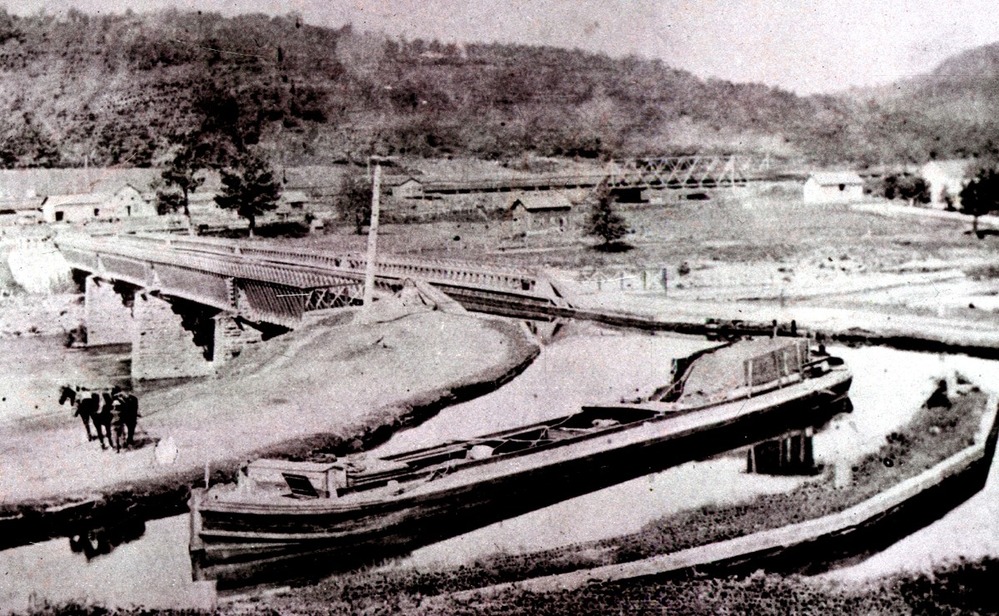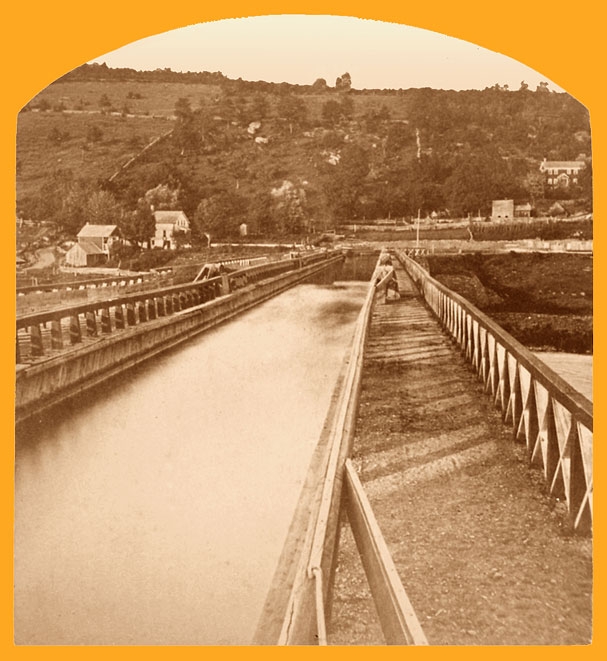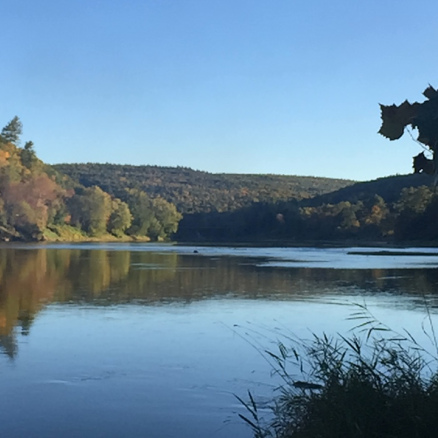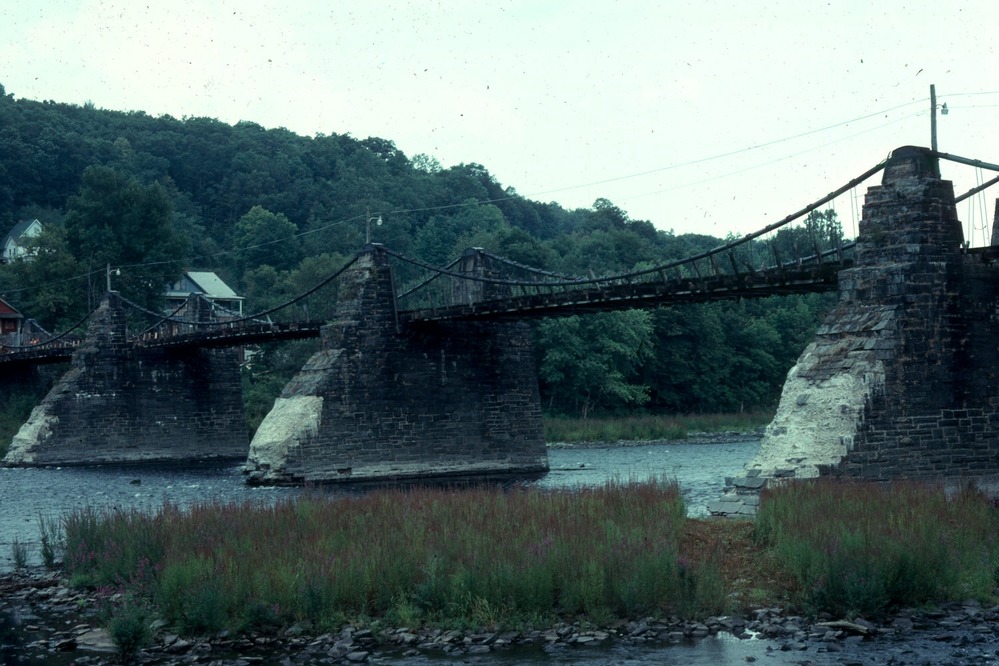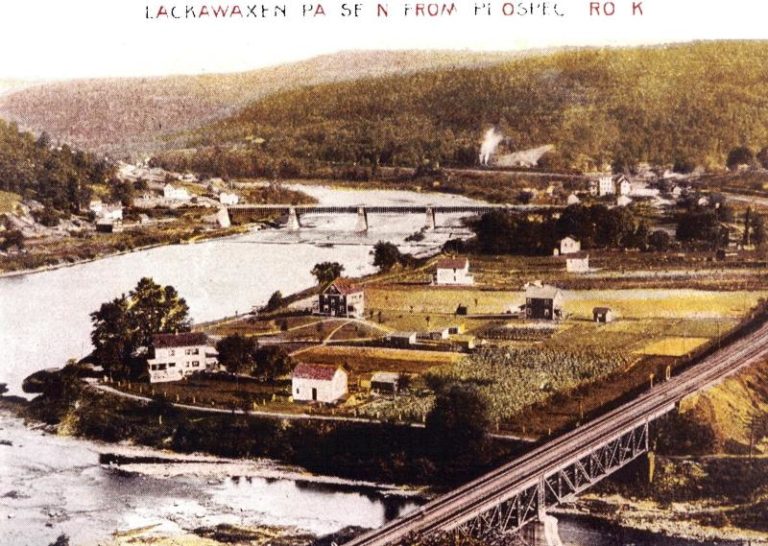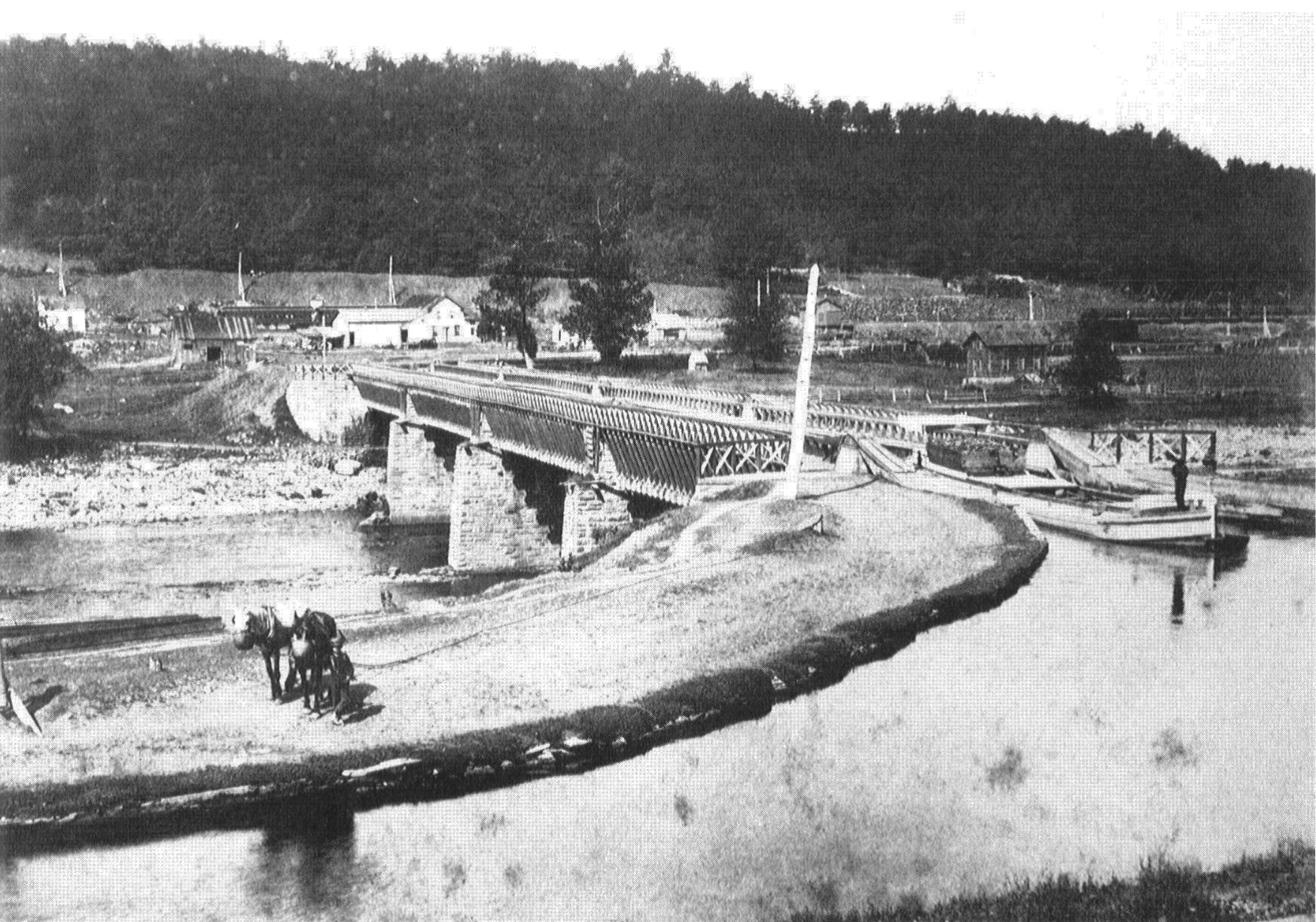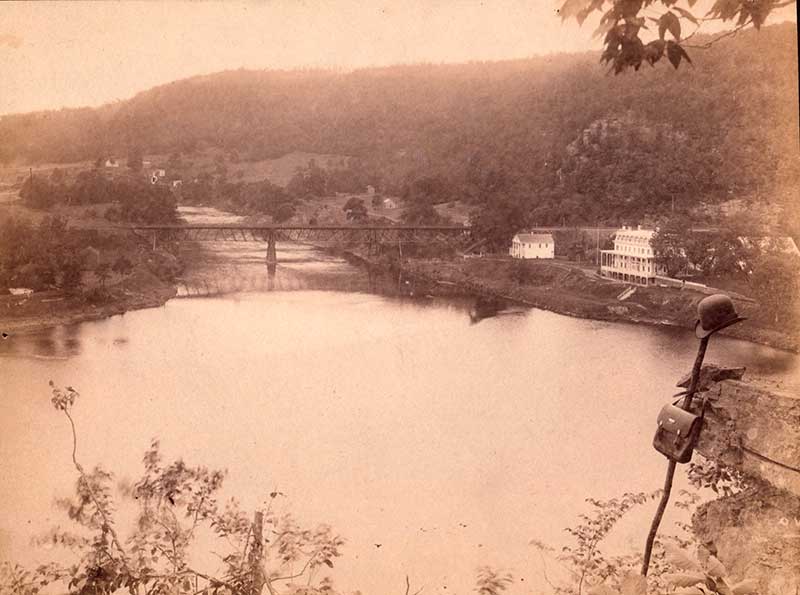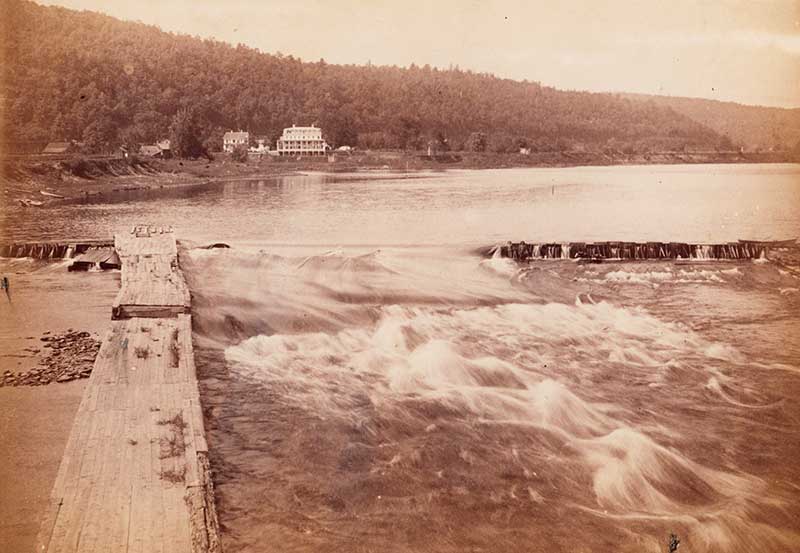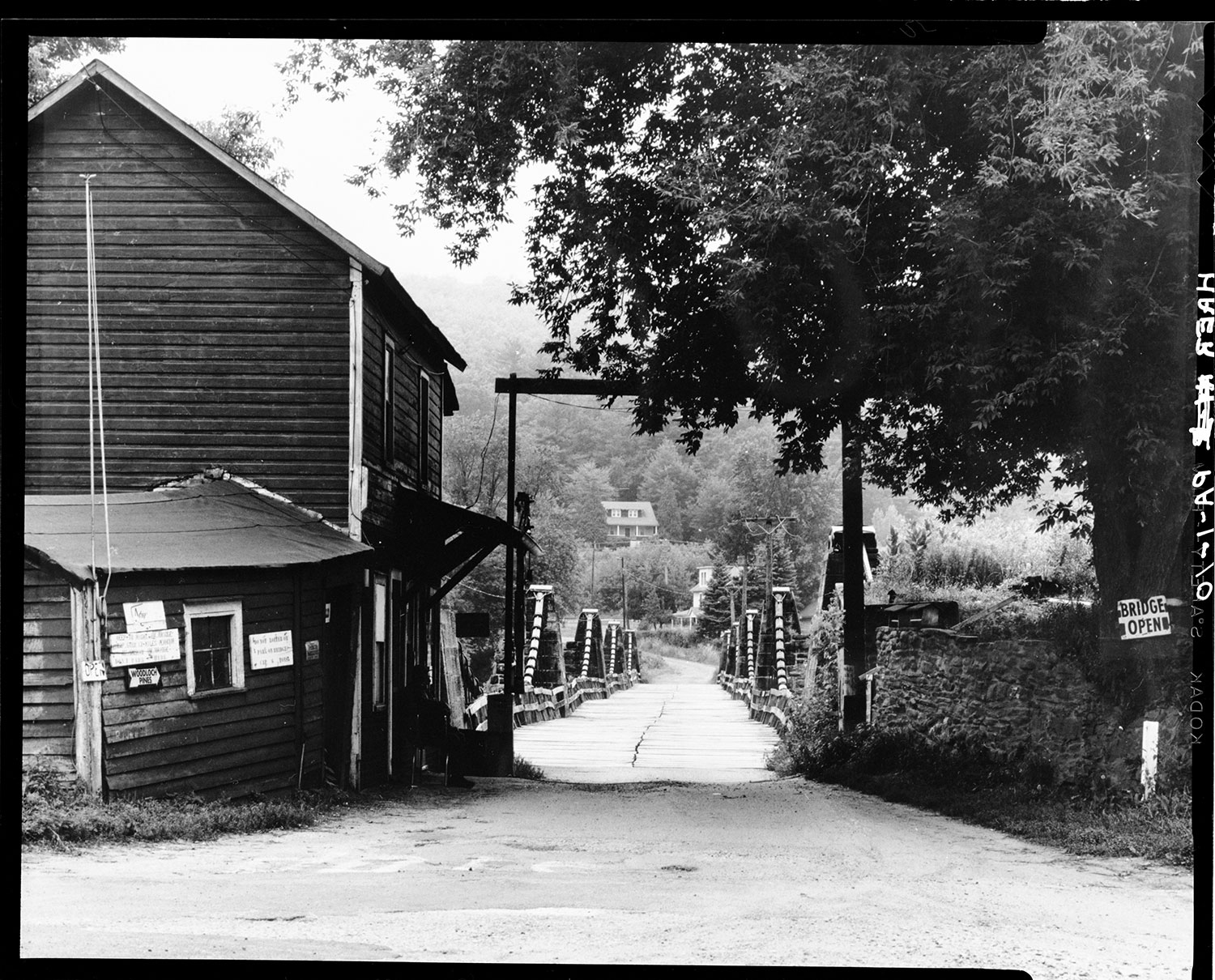Upper Delaware Scenic and Recreational River is the home of the oldest existing wire suspension bridge in the United States – the Delaware Aqueduct, or Roebling Bridge as it is now known. Begun in 1847 as one of four suspension aqueducts on the Delaware and Hudson Canal, it was designed by and built under the supervision of John A. Roebling, future engineer of the Brooklyn Bridge.
Portions of the D & H Canal, including the Delaware Aqueduct, were designated a National Historic Landmark in 1968. The Delaware Aqueduct is also designated a National Civil Engineering Landmark.
The aqueduct operated for fifty years until the closing of the canal in 1898. It was then converted to a private toll bridge and underwent a series of modifications through the years. About 1900, new owner Charles Spruks built a tollhouse abutting the New York side of the structure.
Eventually, the towpaths were sawn off and the wooden trunk walls were dismantled. The protective icebreakers were not maintained and were destroyed by the river over time.
In 1829, the Delaware and Hudson Canal began operating between Honesdale, Pennsylvania and Kingston, New York. In its time, the canal company was the largest private commercial enterprise in the nation. It built 28 locks in Lackawaxen Township alone, raising the elevation of the canal 278 feet (85 m). Some of the old locks are still visible and several lock houses are now privately owned. Roebling’s Delaware Aqueduct, built by John A. Roebling, famed engineer of the Brooklyn Bridge, was constructed in 1848 as part of the canal. It is now preserved as a National Civil Engineering Landmark and National Historic Landmark by the National Park Service (NPS).
The canal linked New York City with the rich coal deposits of the Carbondale, Wilkes-Barre and Scranton areas, providing fuel for both the city’s industrial foundries and heating the expanding number of residences.
In 1848, the New York and Erie Railroad was built through the area; although the canal continued to operate for another fifty years, railroads eventually made canals obsolete.
At the same time, the railroad brought tourism to the area and new sources of revenue; the rugged countryside of the upper Delaware Valley became a popular destination for urban tourists. Stations were built at Lackawaxen, West Colang and Mast Hope, and elaborate resort hotels soon were developed nearby. They often provided guides to visitors for fishing, hiking and riding in the area.
Bluestone quarrying became a major enterprise in the area, starting in the mid-19th century. It was used extensively in the construction of the region’s buildings and sidewalks.
